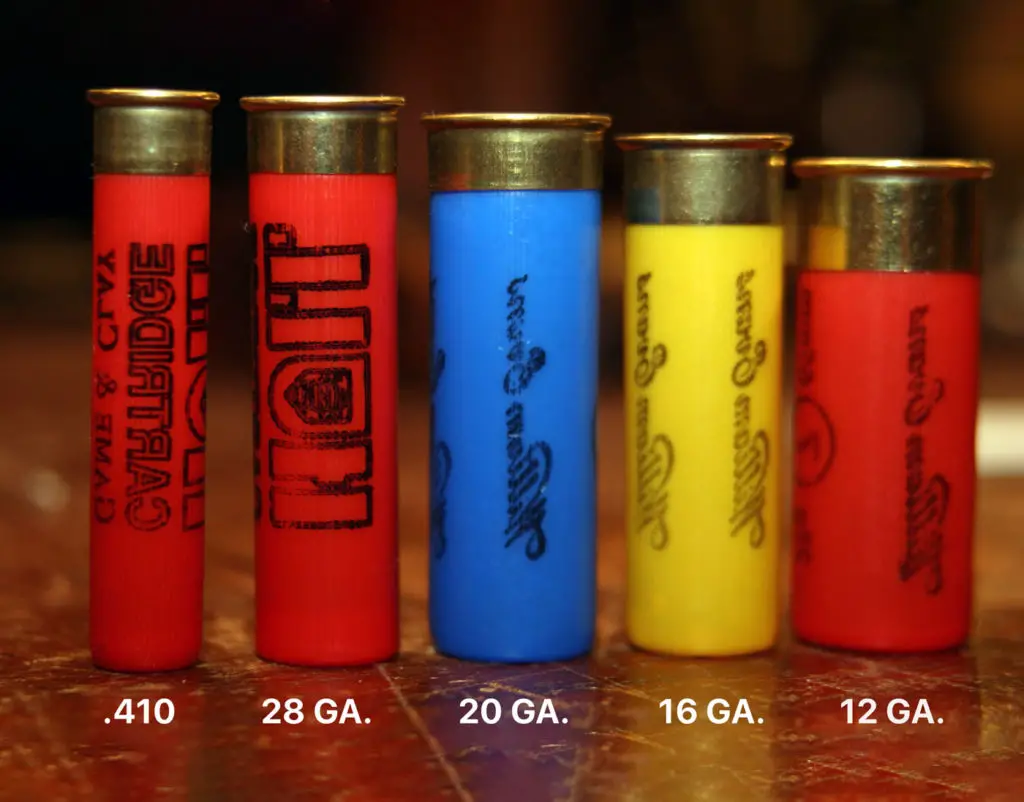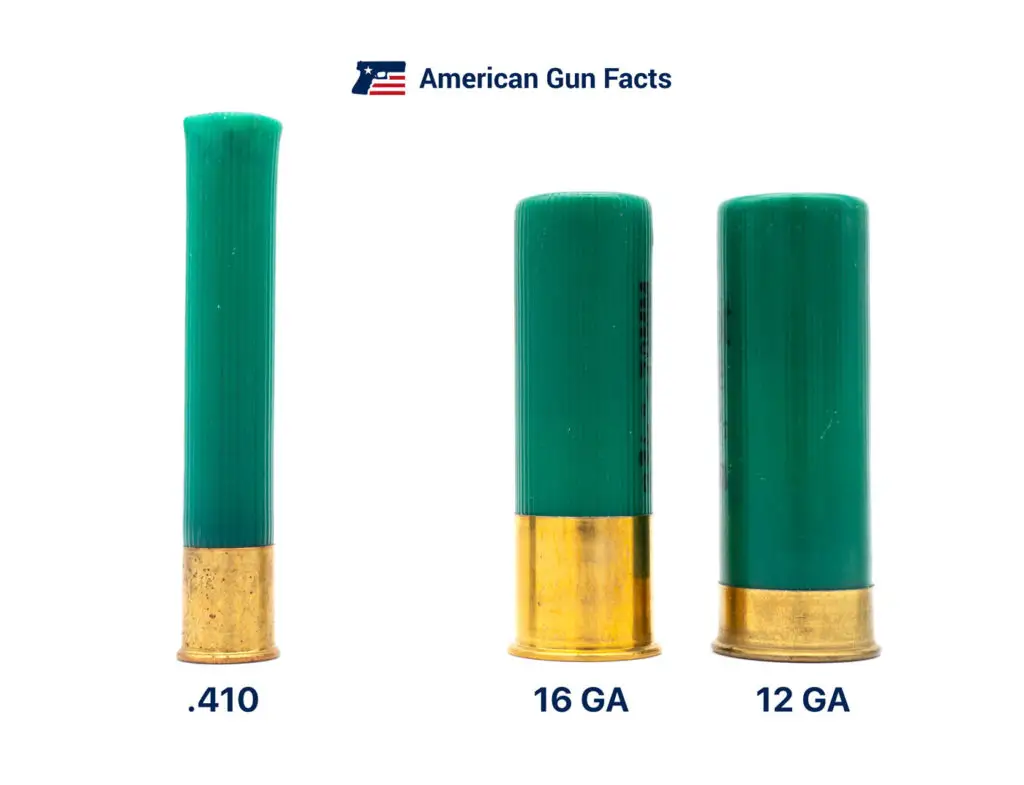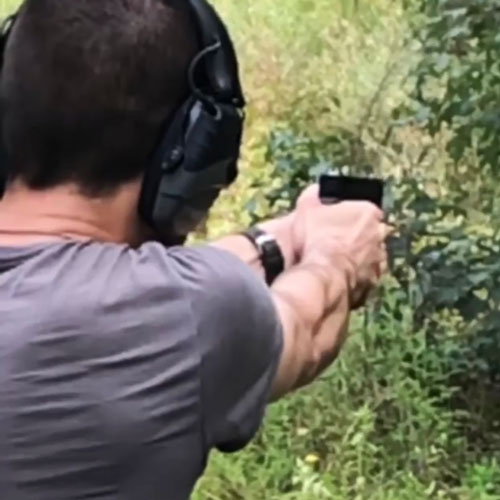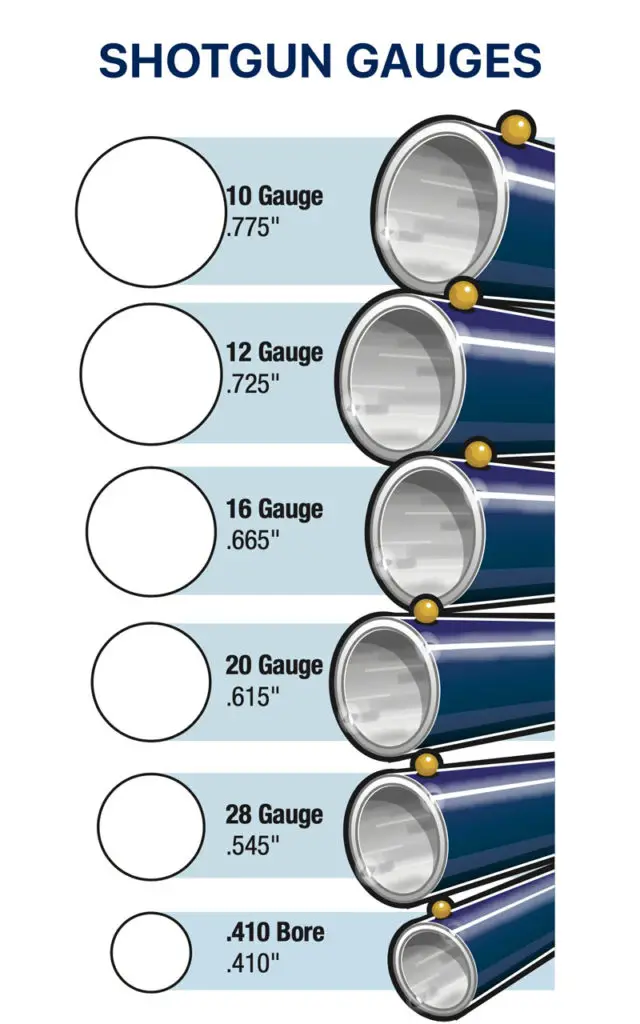If you’re looking for a relatively small barrel shotgun with low kick it might feel like there aren’t a ton of options out there. The more typical 12- and 20-gauge shotguns come with firm, but manageable, kick in most cases. But the problem with those guns is that they aren’t suitable for children who are learning to shoot shotguns, people with limiting shoulder or back injuries, and anyone who isn’t comfortable with getting the occasional bruise from their gun.
Before you say that people just need to seat the gun better before shooting, that genuinely isn’t the problem for most people. Plenty of folks with a good seat and excellent shooting skills still come home bruised depending on the gun they’re using.
So, it makes sense to consider a smaller 28-gauge or .410 shotgun for people who can’t or shouldn’t shoot a gun with the kick of a larger shotgun.
Considerations
But when you’re going small there are all the usual drawbacks you need to consider. With a shotgun, the smaller barrel means that you have less room in your shot for either gunpowder (which reduces range) or pellets (which reduces effectiveness).
Because of those drawbacks, it’s critical to make sure you’re choosing not just the more comfortable gun, but the gun that will be most effective for your needs if you’re choosing between a 28-gauge and a .410.
| .410 | 28 Gauge | |
| Gauge | 67.62 | 28 |
| Diameter | .410 in (10.41mm) | .550 in (13.97mm) |
| Weight of Lead Ball | 0.237 oz | 0.571 oz |

Payload Differences: 28 Gauge Vs. .410
The 28 Gauge will pack a larger punch than the .410
Performance is the #1 concern of most gun owners, as it should be. When it comes to choosing between similar guns of any type you need to know how that gun is likely to perform, what it’s good at, and any drawbacks of using that particular firearm.
That often means looking not just at the gun itself, but also at its ammunition. For shotguns, small differences in how the shot is packed make a big difference in performance, versatility, and best use.
Remember, when you’re talking about 28-gauge vs. .410 bore, you’re talking about two of the smallest barrel bores you can get from a shotgun. Both of these guns are going to have smaller ammo with less shot and yes, less gunpowder, than their larger cousins.
Pellets & Patterning
However, when you’re talking about a 28-gauge, you’re going to get significantly more pellets than a .410.
That means that the 28-gauge shotgun is going to pattern better, it’s going to provide better hunting performance, and it’s going to work more consistently because you have more pellets heading down range.
Velocity
The velocity of the ammo should also be a consideration, but if you’re looking at comparable ammo quality there actually won’t be a significant difference between the .410 and the 28-gauge. Both types of ammo should hit around 1,200 fps.
However, if you opt for the shorter .410 shells, which further limits the capacity of the ammo, you’re probably looking at closer to 1,100-fps, while the 28 gauge’s larger shell size gets closer to 1,300-fps but doesn’t quite make it.
That 200-fps difference, while it might be significant for the best competition shooters, just isn’t that important for an average shooter or most purposes.
Even when it comes to hunting, a 200-fps difference is going to be negligible in terms of actual performance and efficiency.
However, the fact that the 28 gauge is going to be throwing up to 4x as many pellets down range will make a noticeable performance difference.
Ammo Cost
.410 shells are cheaper than 28 gauge shells
If you’re considering which gun to invest in you should also consider how much ammunition for that shotgun is going to cost.
We’re not going to go into exact numbers just because your location, retailer of choice, and supply conditions can create significant price fluctuations in ammo.

However, we will note that regardless of those differences, 28-gauge ammo is pretty much always going to be a few dollars more expensive than .410 ammo of the same quality.
In fact, the extreme popularity of 28-gauge shotguns can sometimes drive the price of their ammo up even higher when supply isn’t able to meet local demand.
That means that the .410 will continue to be the more economical gun once you own it, in addition to having a lower purchasing price on average.
Why Choose a 28 Gauge Shotgun?
A 28 Gauge is ideal for skeet shooting and hunting without the kick of a 20 or 12 gauge.
There are a lot of things going to 28-gauge shotguns. For one thing, they’re one of 4 gauges that are used in skeet shooting competitions, so if you have your eye on competitive shooting this is one of the better guns to get.
They’re also incredibly popular as a hunting gun, though larger shotguns can and will perform better than your average 28-gauge.

There are also a lot of people who like 28-gauge shotguns, so you’re more likely to find yourself part of a community that can help you improve your shooting techniques, offer tips and tricks, and put together shooting days and other community activities.
Beyond the popularity reasons, a 28-gauge is likely to be more effective for most purposes, more consistent, and only has a moderate kick. It’s a shotgun suitable for new shooters of almost all sizes and ability levels.
Why Choose a .410 Shotgun?
A .410 is ideal for kids & people who are first learning how to use a shotgun as well as for shooting small rodents & pests.
The .410 admittedly has a little less going for it. While there may be local competitions and leagues that use the .410, it’s not included in national skeet competitions, and may not consistently offer the kind of performance you want from a competition gun in any case.
That being said, our editor started out skeet shooting with a .410 shotgun. While it definitely made it harder to hit clay pigeons, it was a great way to hone the skill early before moving on to larger shotguns such as a 28 or the more common 20 gauge.
However, they are more affordable, their ammunition is cheaper, and they do offer a lighter kick even than a 28 gauge.

While we wouldn’t necessarily recommend a .410 as a first gun, mostly because it can be frustrating to learn on an inconsistent gun, however, they can be a good tool for getting a newcomer used to the sound and kick of a firearm.
They’re also an incredibly economical option for anyone that is just looking for a hobby gun and doesn’t need specific results on the range.
Final Thoughts: 28 gauge vs 410
While both the 28 gauge and a .410 bore can be a good shotgun for the right owner, there is no denying that the 28 gauge is the more versatile and consistent firearm.
Of course, that doesn’t always mean that a 28 gauge is going to be the right firearm for you. Think carefully about what you’re looking for in a shotgun, specifically in a small shotgun, and consider which of these firearms will work best for you.

Growing up, John loved learning about the components of firearms and what makes them work, which still intrigues him to this day. He’s a very outdoorsy person, and he loves fishing, hunting, and skeet shooting. He is a firm believer in the Second Amendment and the right to bear arms.

